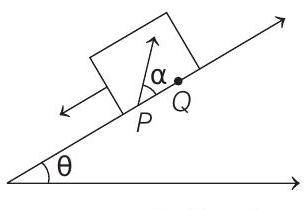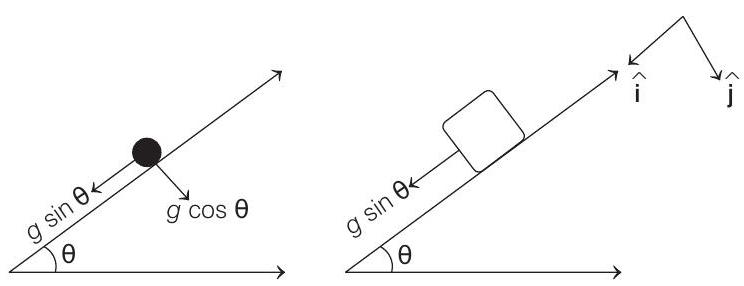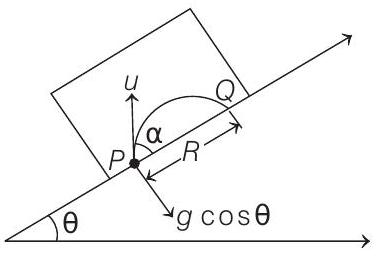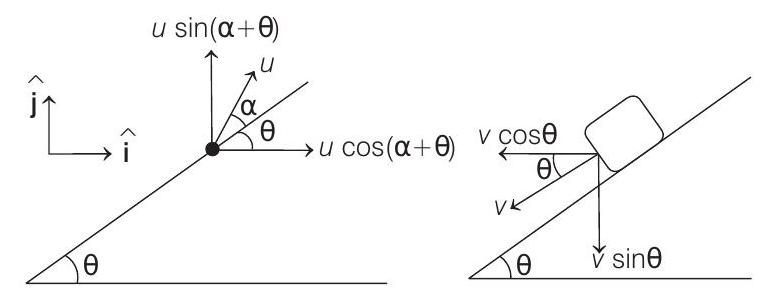Kinematics 5 Question 15
14. A large heavy box is sliding without friction down a smooth plane of inclination
 The initial speed of the particle with respect to the box is
The initial speed of the particle with respect to the box is
(a) Find the distance along the bottom of the box between the point of projection
(b) If the horizontal displacement of the particle as seen by an observer on the ground is zero, find the speed of the box with respect to the ground at the instant when the particle was projected.
(1998, 8M)
Show Answer
Answer:
Correct Answer: 14. (a)
(b)
Solution:
- (a) Accelerations of particle and block are shown in figure.

Acceleration of particle with respect to block
Now, motion of particle with respect to block will be a projectile as shown.

The only difference is,
(b) Horizontal displacement of particle with respect to ground is zero. This implies that initial velocity with
respect to ground is only vertical or there is no horizontal component of the absolute velocity of the particle.

Let
Velocity of block
Now, as we said earlier that horizontal component of absolute velocity should be zero.
Therefore,
(down the plane)






